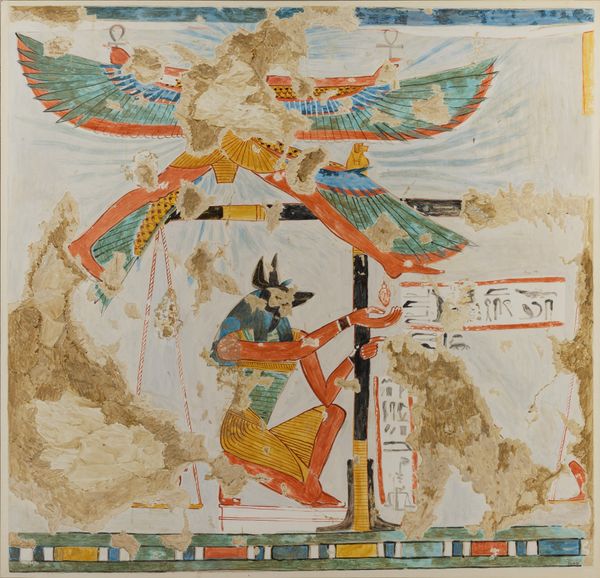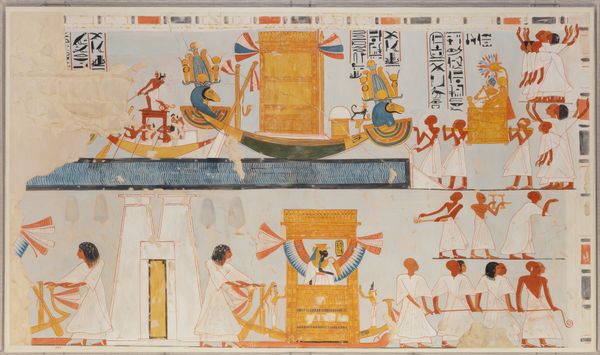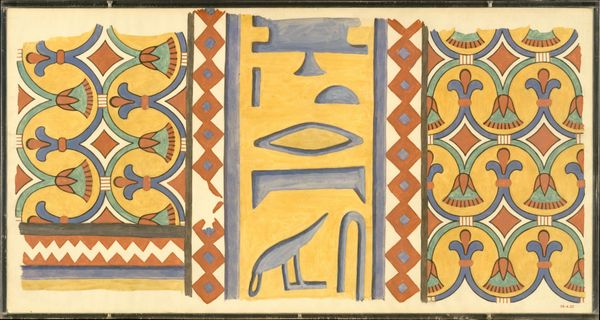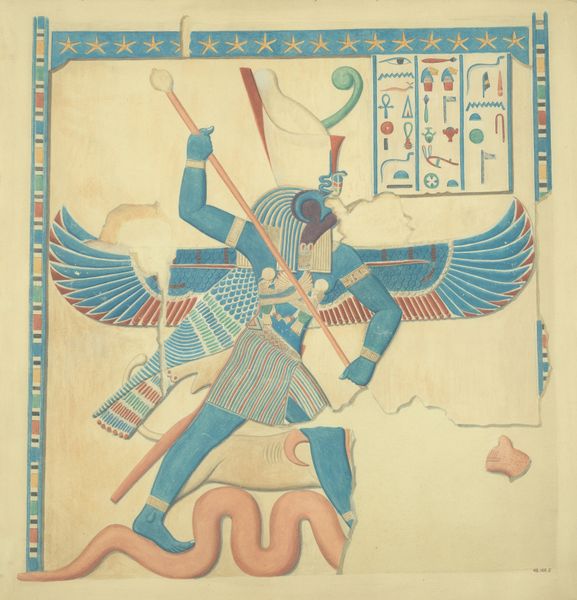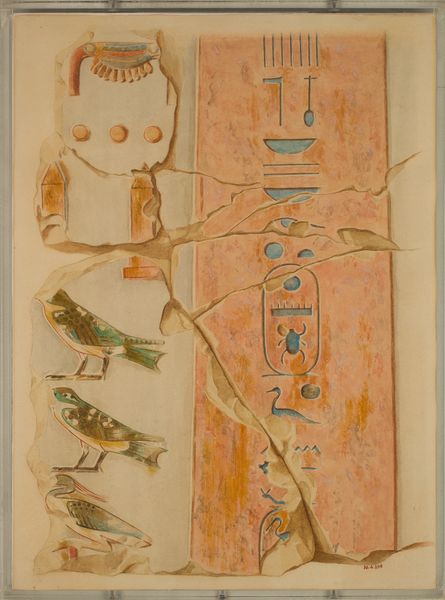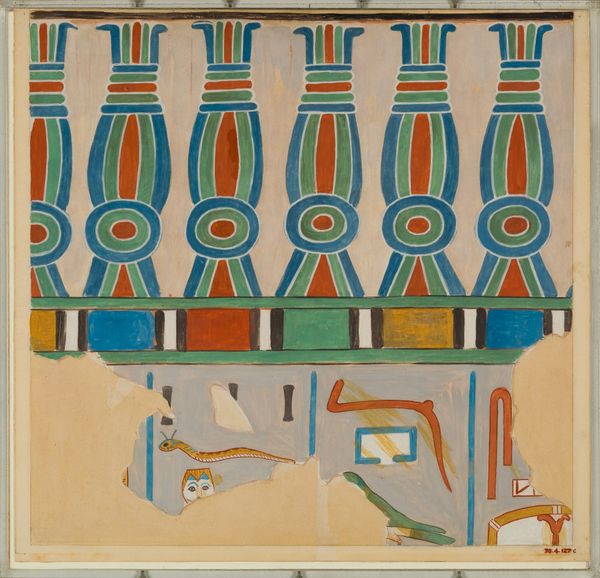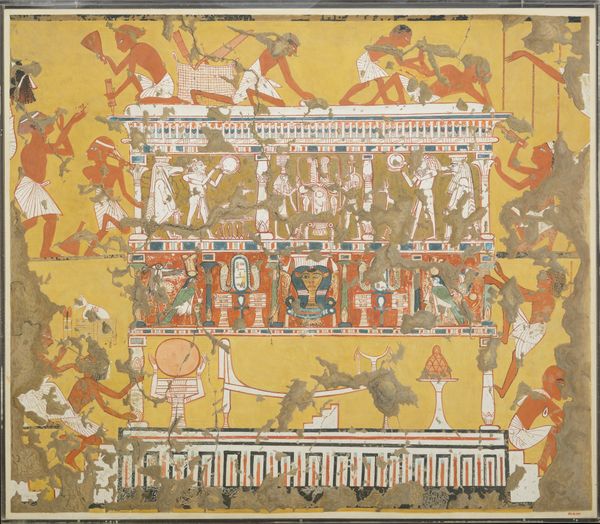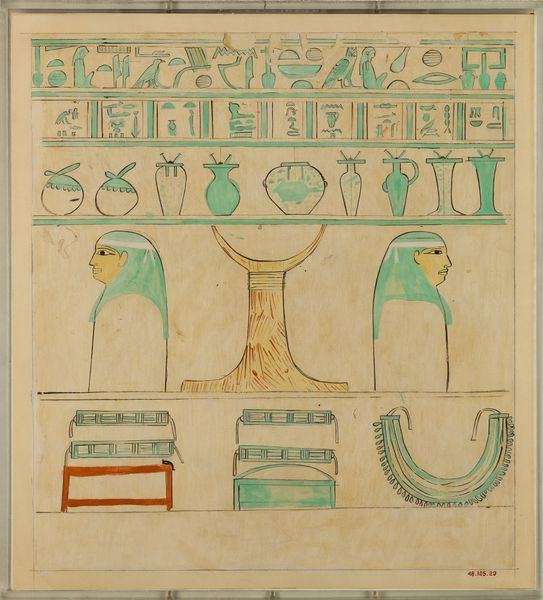
The Goddess Nekhbet, Temple of Hatshepsut 1473 BC
0:00
0:00
tempera, painting, mural
#
narrative-art
#
tempera
#
painting
#
ancient-egyptian-art
#
figuration
#
form
#
egypt
#
ancient-mediterranean
#
line
#
wall painting
#
history-painting
#
mural
Dimensions: facsimile: h. 75 cm (29 1/2 in); w. 106 cm (41 3/4 in) scale 1:1 framed: h. 77.9 cm (30 11/16 in); w. 109.2 cm (43 in)
Copyright: Public Domain
This is Charles K. Wilkinson’s facsimile of The Goddess Nekhbet from the Temple of Hatshepsut, employing the same materials as the original. Ancient Egyptians expertly used locally sourced pigments mixed with binders like gum arabic or egg tempera, applying them to smoothed limestone walls. The pigments, ground minerals like ochre for reds and yellows, azurite for blue, and malachite for green, dictated the color palette and provided a distinct aesthetic. Wilkinson’s copy conveys how the fresco secco process – painting on dry plaster – allowed for intricate detailing. This required skilled labor, a workforce of artisans managed by overseers, reflecting the hierarchical structure of Egyptian society. The original image speaks to this process. It was made to honor powerful leaders and represent the state's wealth, so the techniques and the material choices are inseparable from the culture of the time. Understanding the goddess Nekhbet means recognizing how materials, making, and social context intertwine, challenging conventional distinctions between art and craft.
Comments
No comments
Be the first to comment and join the conversation on the ultimate creative platform.
